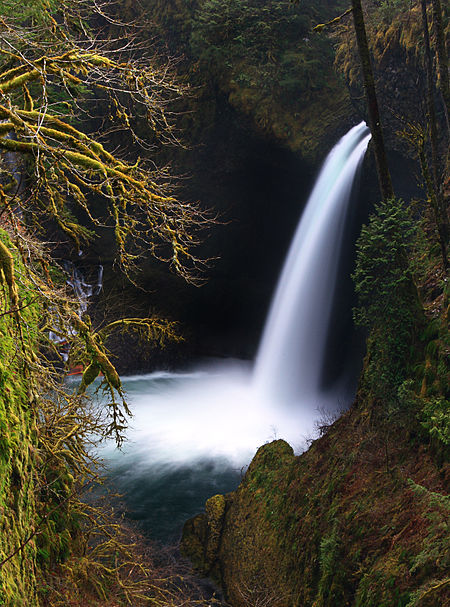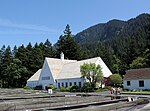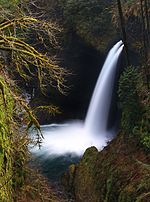Eagle Creek (Columbia River tributary)
Columbia River GorgeMount Hood National ForestRivers of Hood River County, OregonRivers of OregonTributaries of the Columbia River

Eagle Creek is a creek located mainly in Hood River County, Oregon, in the Columbia River Gorge, with its last roughly 0.5 miles (0.80 km) and mouth in Multnomah County. A tributary of the Columbia River, the creek flows for approximately 15 miles (24 km) from the Thrush Pond between Eagle Butte and Tanner Butte to its mouth near Bonneville Dam. The East Fork Eagle Creek is a major tributary that begins at Wahtum Lake and joins the main stem approximately 2/3 the way between the Thrush Pond and the Columbia River, separated by Indian Mountain.
Excerpt from the Wikipedia article Eagle Creek (Columbia River tributary) (License: CC BY-SA 3.0, Authors, Images).Eagle Creek (Columbia River tributary)
Tanner Cutoff Trail #448,
Geographical coordinates (GPS) Address Nearby Places Show on map
Geographical coordinates (GPS)
| Latitude | Longitude |
|---|---|
| N 45.590555555556 ° | E -121.9325 ° |
Address
Tanner Cutoff Trail #448
Tanner Cutoff Trail #448
Oregon, United States
Open on Google Maps






